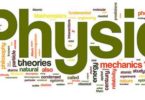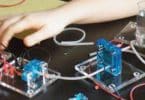Photoelectric Effect Previous Year Questions:
Ques: The work function of a metal is
(a) The energy for the electron to enter into the metal
(b) The energy for producing X-ray
(c) The energy for the electron to come out from metal surface
(d) None of these
Ques: A photocell is illuminated by a small bright source placed 1 m away. When the same source of light is placed ½ m away, the number of electrons emitted by photo cathode would
(a) Decrease by a factor of 2
(b) Increase by a factor of 2
(c) Decrease by a factor of 4
(d) Increase by a factor of 4
Related: Mechanical Wave Quiz
Ques: For photoelectric emission, tungsten requires light of 2300 Å. If light of 1800 Å wavelength is incident then emission
(a) Takes place
(b) Don’t take place
(c) May or may not take place
(d) Depends on frequency
Ques: The photoelectric effect can be understood on the basis of
(a) The principle of superposition
(b) The electromagnetic theory of light
(c) The special theory of relativity
(d) Line spectrum of the atom
Ques: Photo-electric effect can be explained by
(a) Corpusular theory of light
(b) Wave nature of light
(c) Bohr’s theory
(d) Quantum theory of light
Ques: If the wavelength of light is 4000 Å, then the number of waves in 1 mm length will be
(a) 25
(b) 0.25
(c) 0.25 x 104
(d) 25 x 104
Ques: The threshold wavelength for photoelectric effect of a metal is 6500 Å. The work function of the metal is approximately
(a) 2 eV
(b) 1 eV
(c) 0.1eV
(d) 3 eV
Ques: x-rays of wavelength 0.82 fall on a metal plate. Find wavelength associated with photoelectron emitted. neglect work function of metal. Given h = 6.6 x 10-34 Js, C = 3 x 108 m/s
(a) 0.099 Å
(b) 0.02 Å
(c) 0.03 Å
(d) 0.04 Å
Ques: According to photon theory of light which of the following physical quantities associated with a photon do not/does not change as it collides with an electron in vacuum
(a) Energy and momentum
(b) Speed and momentum
(c) Speed only
(d) Energy only
Related: Atomic number, mass number and isotopes test questions
Ques: The photoelectric threshold wavelength for potassium (work function being 2eV) is
(a) 310 nm
(b) 620 nm
(c) 1200 nm
(d) 2100 nm
Ques: Photon of 5.5 eV energy fall on the surface of the metal emitting photoelectrons of maximum kinetic energy 4.0 eV. The stopping voltage required for these electrons are
(a) 5.5 V
(b) 1.5V
(c) 9.5V
(d) 4.0V
Ques: When wavelength of incident photon is decreased then
(a) Velocity of emitted photo-electron decreases
(b) Velocity of emitted photoelectron increases
(c) Velocity of photoelectron do not charge
(d) Photo electric current increases
Ques: The photoelectric threshold wavelength of a certain metal is 3000Å. If the radiation of 2000Å is incident on the metal
(a) Electrons will be emitted
(b) Positrons will be emitted
(c) Protons will be emitted
(d) Electrons will not be emitted
Related: Question Bank for Genetics
Ques: Which of the following statements is correct
(a) The current in a photocell increases with increasing frequency of light
(b) The photocurrent is proportional to applied voltage
(c) The photocurrent increases with increasing intensity of light
(d) The stopping potential increases with increasing intensity of incident light
Ques: The frequency of the incident light falling on a photosensitive metal plate is doubled, the kinetic energy of the emitted photoelectrons is
(a) Double the earlier value
(b) Unchanged
(c) More than doubled
(d) Less than doubled
Ques: When light of wavelength 300 nm (nanometer) falls on a photoelectric emitter, photoelectrons are liberated. For another emitter, however light of 600 nm wavelength is sufficient for creating photoemission. What is the ratio of the work functions of the two emitters
(a) 1 : 2
(b) 2 : 1
(c) 4 : 1
(d) 1 : 4
Ques: If in a photoelectric experiment, the wavelength of incident radiation is reduced from 6000 Å to 4000 Å then
(a) Stopping potential will decrease
(b) Stopping potential will increase
(c) Kinetic energy of emitted electrons will decrease
(d) The value of work function will decrease
Ques: Which of the following is dependent on the intensity of incident radiation in a photoelectric experiment
(a) Work function of the surface
(b) Amount of photoelectric current
(c) Stopping potential will be reduced
(d) Maximum kinetic energy of photoelectrons
Ques: Energy conversion in a photoelectric cell takes place from
(a) Chemical to electrical
(b) Magnetic to electrical
(c) Optical to electrical
(d) Mechanical to electrical
Ques: Light of wavelength 4000 Å is incident on a sodium surface for which the threshold wave length of photo – electrons is 5420 Å. The work function of sodium is
(a) 4.58 eV
(b) 2.29 eV
(c) 1.14 eV
(d) 0.57 eV
Related: Quiz Human Endocrine System
Ques: A photo cell is receiving light from a source placed at a distance of 1 m. If the same source is to be placed at a distance of 2 m, then the ejected electron
(a) Moves with one-fourth energy as that of the initial energy
(b) Moves with one-fourth of momentum as that of the initial momentum
(c) Will be half in number
(d) Will be one-fourth in number
Ques: Stopping potential for photoelectrons
(a) Does not depend on the frequency of the incident light
(b) Does not depend upon the nature of the cathode material
(c) Depends on both the frequency of the incident light and nature of the cathode material
(d) Depends upon the intensity of the incident light
Ques: When the light source is kept 20 cm away from a photo cell, stopping potential 0.6 V is obtained. When source is kept 40 cm away, the stopping potential will be
(a) 0.3 V
(b) 0.6 V
(c) 1.2 V
(d) 2.4 V
Ques: The retarding potential for having zero photo-electron current
(a) Is proportional to the wavelength of incident light
(b) Increases uniformly with the increase in the wavelength of incident light
(c) Is proportional to the frequency of incident light
(d) Increases uniformly with the increase in the frequency of incident light wave
Ques: The photoelectric threshold wavelength for a metal surface is 6600 Å. The work function for this is
(a) 1.87 V
(b) 1.87 eV
(c) 18.7 eV
(d) 0.18 eV
Ques: The number of photo-electrons emitted per second from a metal surface increases when
(a) The energy of incident photons increases
(b) The frequency of incident light increases
(c) The wavelength of the incident light increases
(d) The intensity of the incident light increases
Ques: When light falls on a metal surface, the maximum kinetic energy of the emitted photo-electrons depends upon
(a) The time for which light falls on the metal
(b) Frequency of the incident light
(c) Intensity of the incident light
(d) Velocity of the incident light
Ques: A metal surface of work function 1.07 eV is irradiated with light of wavelength 332 nm. The retarding potential required to stop the escape of photo-electrons is
(a) 4.81 eV
(b) 3.74 eV
(c) 2.66 eV
(d) 1.07 eV
Related: Virus multiple choice questions and answers
Ques: The mass of a photo electron is
(a) 9.1 x 10–27 kg
(b) 9.1 x 10–29 kg
(c) 9.1 x 10–31 kg
(d) 9.1 x 10–34 kg
Ques: Photo cells are used for the
(a) Reproduction of pictures from the cinema film
(b) Reproduction of sound from the cinema film
(c) Automatic switching of street light
(d) (b) and (c) both
Ques: Kinetic energy with which the electrons are emitted from the metal surface due to photoelectric effect is
(a) Independent of the intensity of illumination
(b) Independent of the frequency of light
(c) Inversely proportional to the intensity of illumination
(d) Directly proportional to the intensity of illumination
Ques: The approximate wavelength of a photon of energy 2.48 eV is
(a) 500 Å
(b) 5000 Å
(c) 2000 Å
(d) 1000 Å
Ques: Which of the following statement is not correct?
(a) Photographic plates are sensitive to infrared rays
(b) Photographic plates are sensitive to ultraviolet rays
(c) Infra-red rays are invisible but can cast shadows like visible light
(d) Infrared photons have more energy than photons of visible light
Ques: The maximum kinetic energy of photoelectrons emitted from a surface when photons of energy 6 eV fall on it is 4 eV. The stopping potential in volts is
(a) 2
(b) 4
(c) 6
(d) 10
Related: Photosynthesis test questions
Ques: The work function of aluminium is 4.2 eV. If two photons, each of energy 3.5 eV strike an electron of aluminium, then emission of electrons will be
(a) Possible
(b) Not possible
(c) Data is incomplete
(d) Depend upon the density of the surface







Ques: The photoelectric effect can be understood on the basis of
(a) The principle of superposition
(b) The electromagnetic theory of light
(c) The special theory of relativity
(d) Line spectrum of the atom
Ans. (d)
why its related to the Line spectrum of the atom?
Ques: Photo-electric effect can be explained by
(a) Corpusular theory of light
(b) Wave nature of light
(c) Bohr’s theory
(d) Quantum theory of light
Ans. (d)
why its related to the
for this question can you explain more , why the photoelectric effect related to quantum theory of light , i think that its expalin by the corpusculaire theory?